Editorial
Our journal statistics for 2024
This editorial provides an overview of the key statistics for Volume 5 (2024) of the HKS Misinformation Review, including submission and acceptance rates, accepted article types, publication speed and frequency, citation impact, most-viewed articles, engagement and readership, as well as author and reviewer demographics.
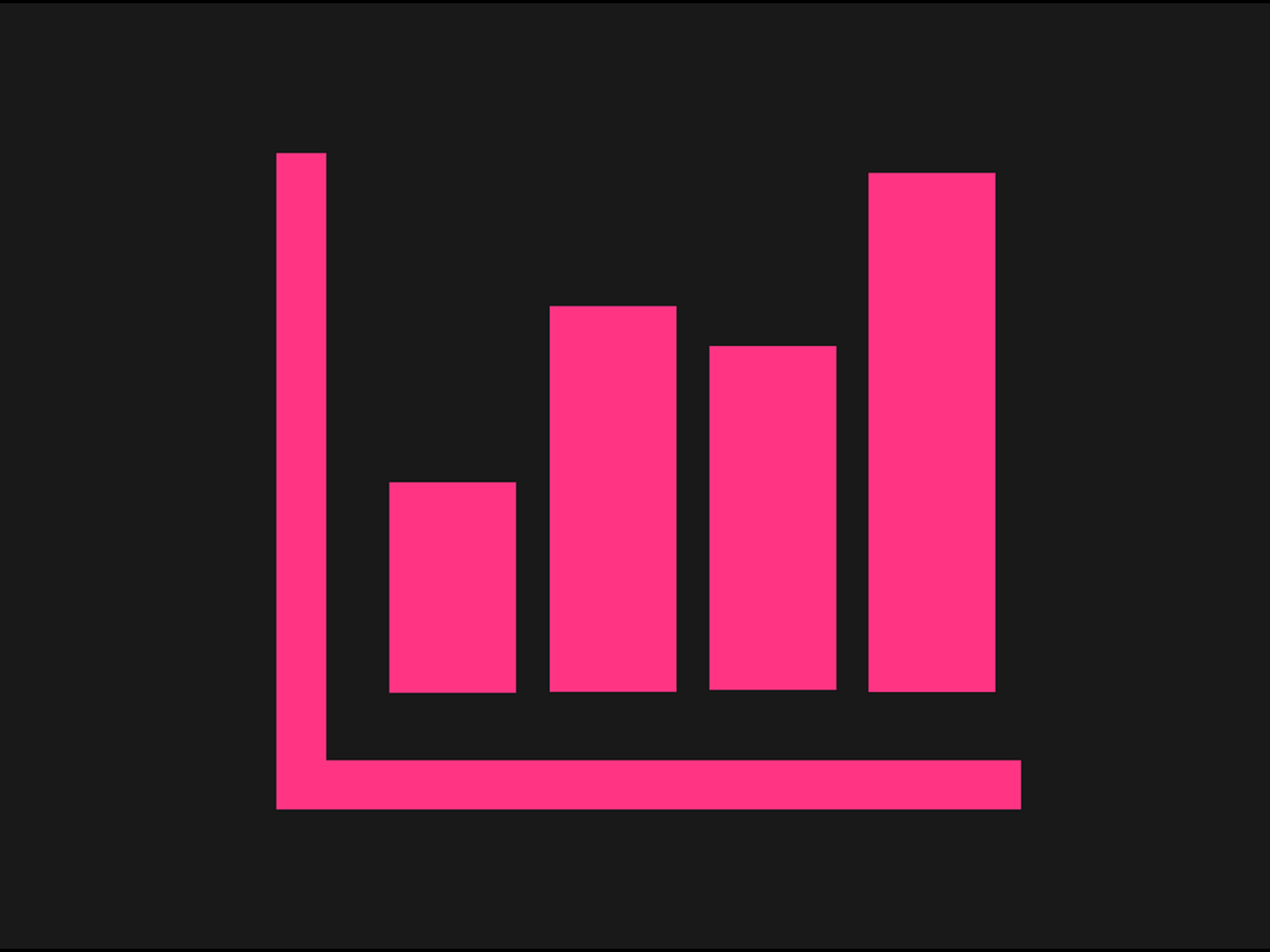
Acknowledgements
We extend our sincere thanks to everyone who contributed to making Volume 5 of the HKS Misinformation Review a success. This milestone marks five years of advancing the study of misinformation, and it would not have been possible without the dedication of our editorial team. We are grateful to our editor-in-chief, managing editor, senior editors, and associate editors for their invaluable contributions. We also appreciate the meticulous work of our copy editor and the expert insight of our special editor for commentaries. Special thanks go to the 94 peer reviewers who provided critical feedback, ensuring the rigor and quality of the articles we publish. Finally, we are thankful for the continued support of the excellent team at the Harvard Kennedy School’s Shorenstein Center on Media, Politics and Public Policy.
Submission and acceptance rates
In 2024, we received 92 submissions, of which 39 were accepted for publication, resulting in an acceptance rate of 42% (see Figure 1). This marks an 18% increase in submissions compared to 2023 (78 submissions) and a 31% increase compared to 2022 (70 submissions).
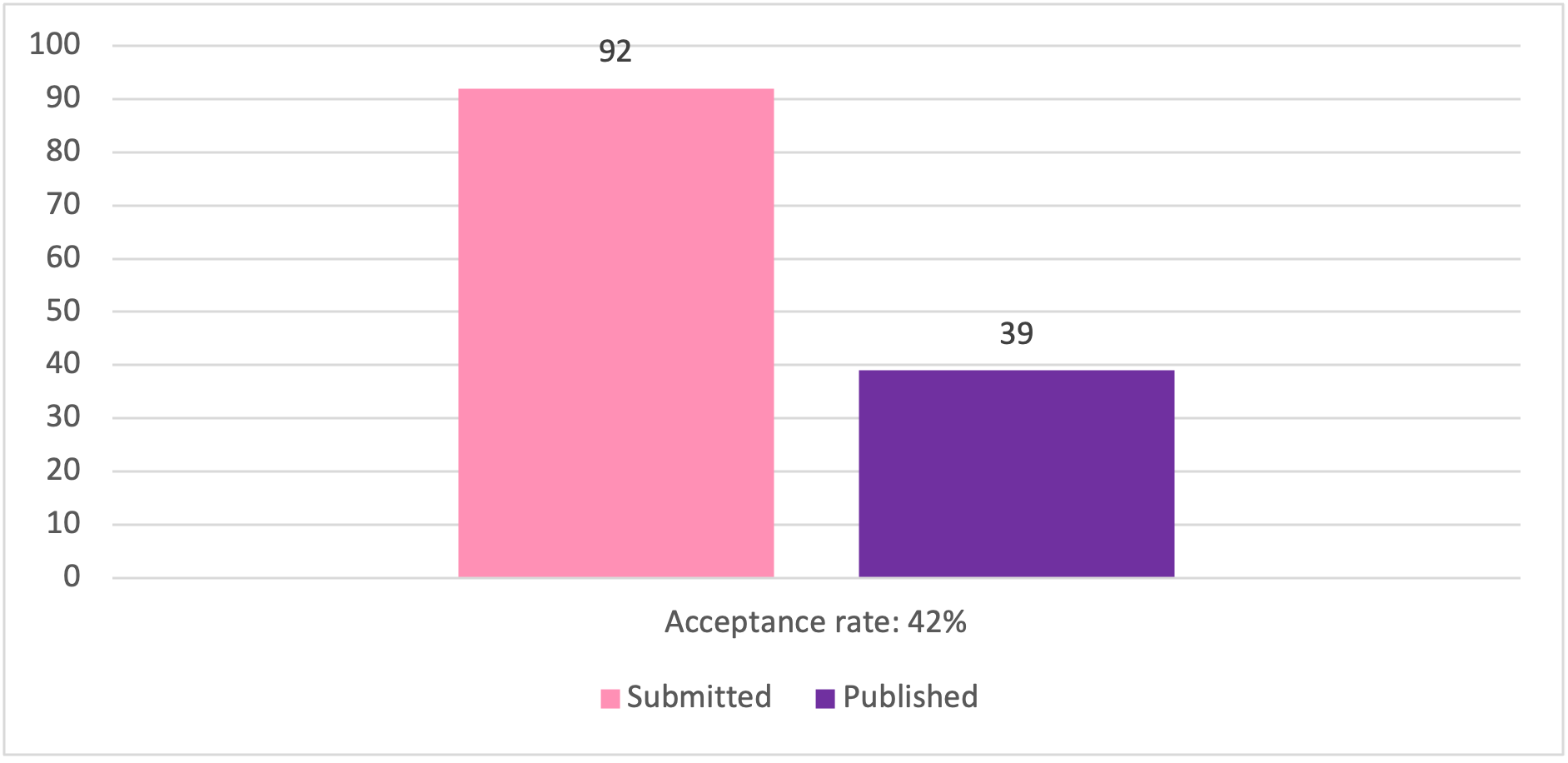
Accepted article types
In 2024, we accepted 23 Research Articles (59%),1Research Articles (1,500–3,000 words): Provide original research questions, analyze prior literature, and positions the importance of the research in relation to exiting scholarship; develop an original study or model to answer the research questions; present a compelling analysis with real-word implications and applications. 12 Research Notes (31%),2Research Notes (1,500–2,500 words): Offer novel preliminary findings and/or exploratory interventions based on smaller-scale studies and/or research-in-progress; present more limited interventions (e.g., a new idea, more limited data to suggest future directions, empirical findings that fill a gap in the literature without a broader theoretical argument, and reflections on methodological approaches, challenges, and debates). and four Commentaries (10%).3Commentaries (1,500–2,000 words): Provide a forum for focused essays on evidence-based perspectives; may outline current advances, evaluate implications of particular efforts to counter misinformation, or suggest new ways of engaging existing the issue. Of the 12 Research Notes, seven were submitted as such, while five were originally submitted as Research Articles (see Figure 2).

Publication speed
Timely publication remains a key priority. In 2024, the average time from submission to first editorial decision for Research Articles and Research Notes was nine days. Editorial decisions after peer review were made within 42 days on average, while the average time from submission to final editorial decision was 124 days, with an additional 31 days from acceptance to publication.
This represents a notable improvement compared to 2023 average, where the first editorial decision time was 20 days, editorial decisions after peer review were made within 75 days, and the time form submission-to-acceptance averaged 187 days.
For Commentaries in 2024, the average time from submission to first editorial decision was 16 days. The time from submission to first post-editing decision averaged 49 days, while the period from submission to acceptance was 118 days. Once accepted, Commentaries were published within 13 days.
Table 1 below summarizes the 2024 publication speed metrics for Research Articles, Research Notes, and Commentaries. Figure 3 illustrates the 2023–2024 comparison for Research Articles and Research Notes.
| Stage | Peer-reviewed Research Articles & Research Notes | Commentaries |
| Submission to first decision | 9 days | 16 days |
| Submission to first post-review/post-editing decision | 42 days | 49 days |
| Submission to acceptance | 124 days | 118 days |
| Acceptance to publication | 31 days | 13 days |
| Note: The acceptance-to-publication average includes one article that is ready for publication but not yet published at the authors’ request; the ready-for-publication date was used in calculating the average. | ||
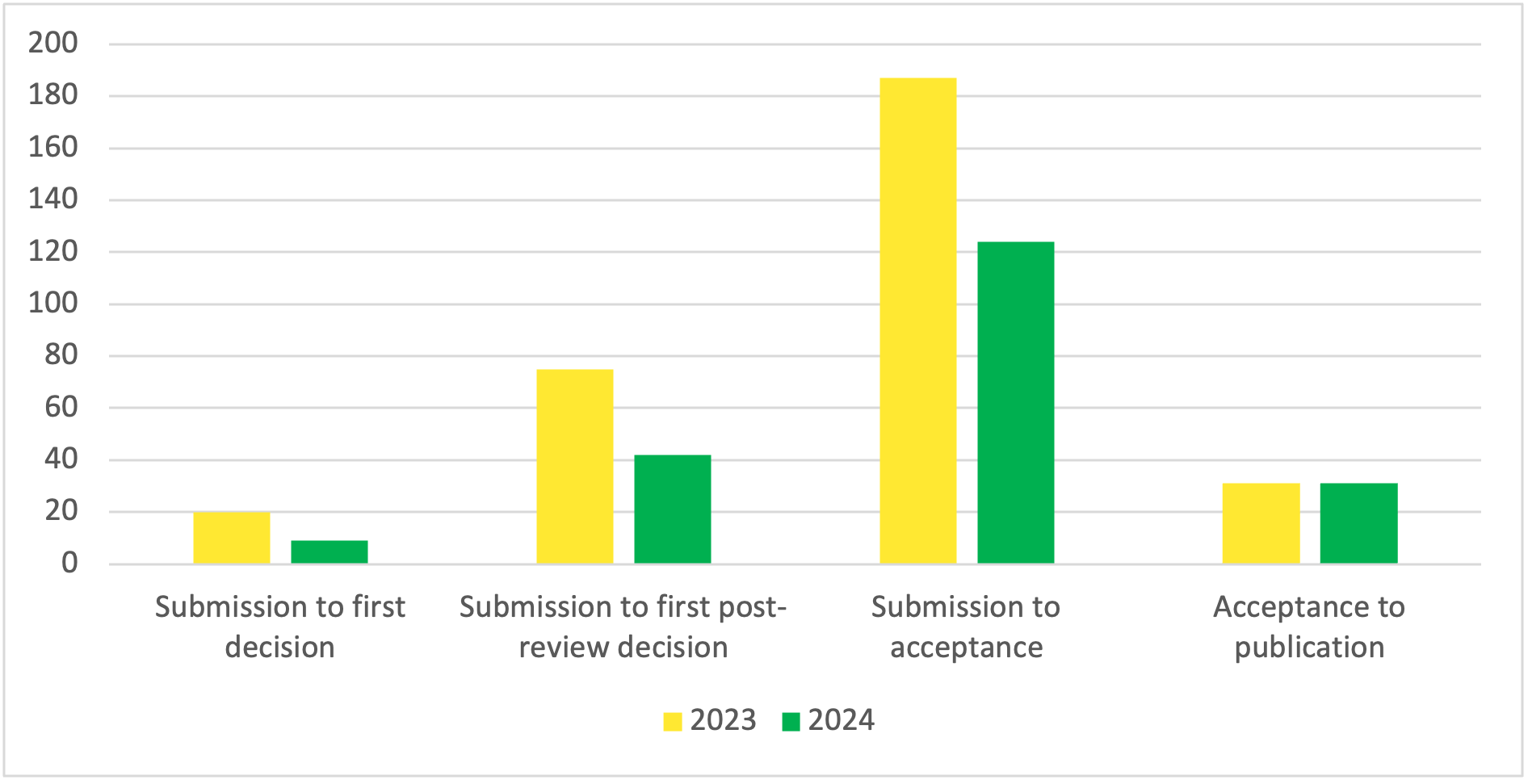
We continue to work on speeding up our publication timeline. As of March 2025, our time to first decision, for example, has further decreased to six days on average for Research Articles and Research Notes and to four days for Commentaries.
While we strive to publish articles as fast as possible, our publication speed depends heavily on the quality of submitted manuscripts. We encourage authors to closely follow our Author Guidelines when submitting a manuscript to expedite the process.
Publication frequency
We publish on a rolling basis, with six regular bi-monthly issues and an average of five articles per issue. In 2024, we also published a special issue on conspiracy theories, featuring seven papers guest edited by Daniel Stockemer and Jean-Nicolas Bordeleau. Figure 4 shows the distribution of published articles per issue.

Most-viewed articles
Table 2 below provides an overview of the five most-viewed articles in 2024. Additional article-level metrics, including Crossref citations, Altmetric attention scores, PDF download counts, and article views can be found on the individual article pages. Our newly launched Most Cited & Most Viewed page highlights the five most-viewed and most-cited articles (as indexed by Crossref) to date.
| Number of views | Article title | Volume & issue number | Authors |
| 65,250 | “Fact-checking” fact checkers: A data-driven approach | Volume 4, Issue 5 (October 2023) | Sian Lee, Aiping Xiong, Haeseung Seo, Dongwon Lee |
| 29,992 | Misinformation in action: Fake news exposure is linked to lower trust in media, higher trust in government when your side is in power | Volume 1, Issue 4 (May 2020) | Katherine Ognyanova, David Lazer, Ronald E. Robertson, Christo Wilson |
| 28,430 | GPT-fabricated scientific papers on Google Scholar: Key features, spread, and implications for preempting evidence manipulation | Volume 5, Issue 5 (September 2024) | Jutta Haider, Kristofer Rolf Söderström, Björn Ekström, Malte Rödl |
| 19,045 | Misinformation reloaded? Fears about the impact of generative AI on misinformation are overblown | Volume 4, Issue 5 (October 2023) | Felix M. Simon, Sacha Altay, Hugo Mercier |
| 18,058 | Twitter flagged Donald Trump’s tweets with election misinformation: They continued to spread both on and off the platform | Volume 2, Issue 4 (August 2021) | Zeve Sanderson, Megan A. Brown, Richard Bonneau, Jonathan Nagler, Joshua A. Tucker |
Citation impact
The Scopus CiteScore highlights the HKS Misinformation Review’s sustained influence in the field.4See https://www.scopus.com/sourceid/21101158576#tabs=0. The latest available metric, CiteScore 2023—based on citations from 2020 to 2023—stands at 20.7, ranking #3 out of 604 social science journals and placing the journal in the 99th percentile (see Figure 5).
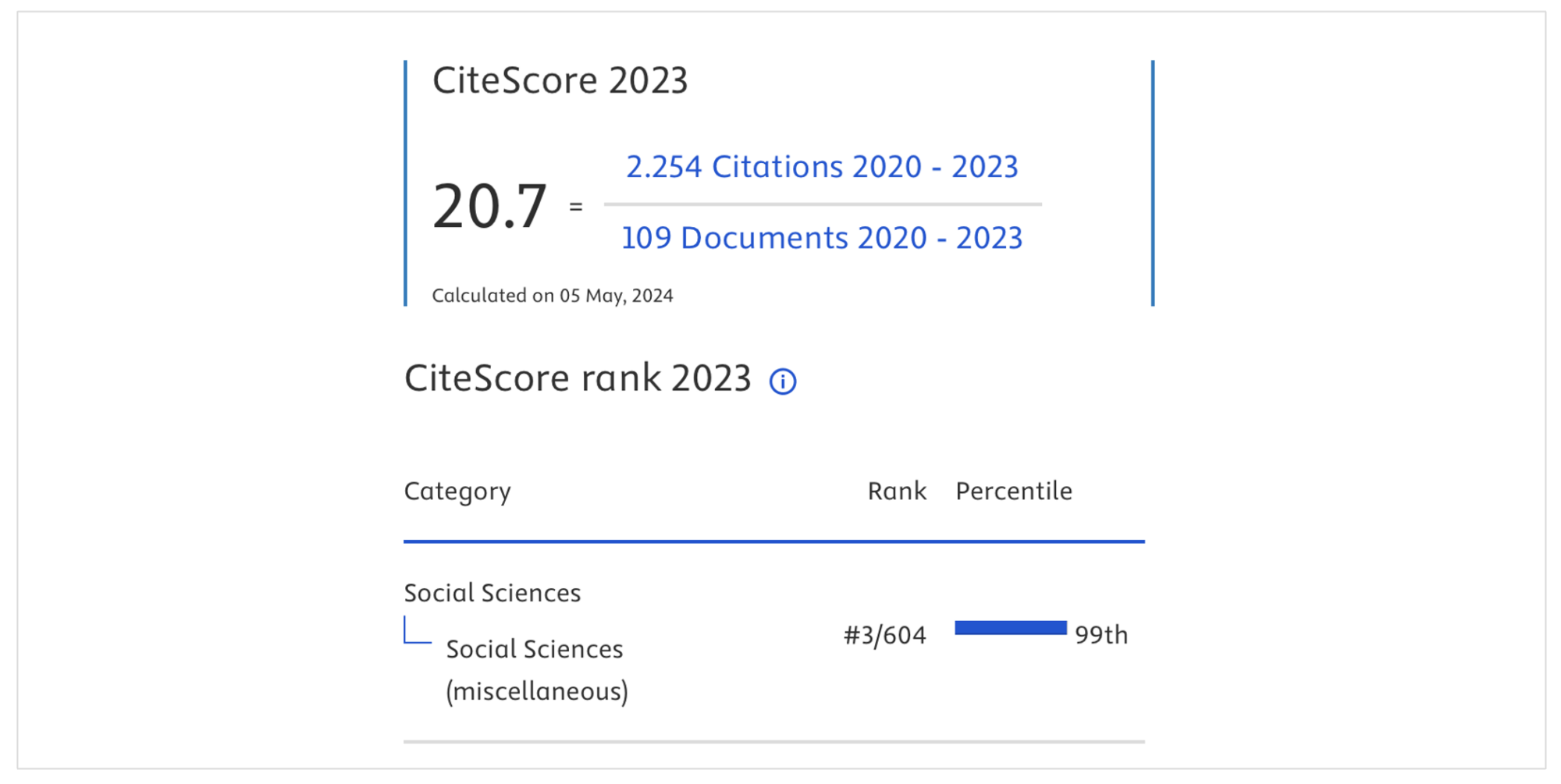
Once the 2024 data is released in June 2025, we will update our Metrics page, which also provides additional journal metrics and explanations.
Engagement and readership
Our website engagement continues to expand, with 330,000 active users in 2024, marking a 61% increase from 2020 (see Figure 6). Total page views reached 520,000. The number of website visits has been rounded to the nearest thousand.
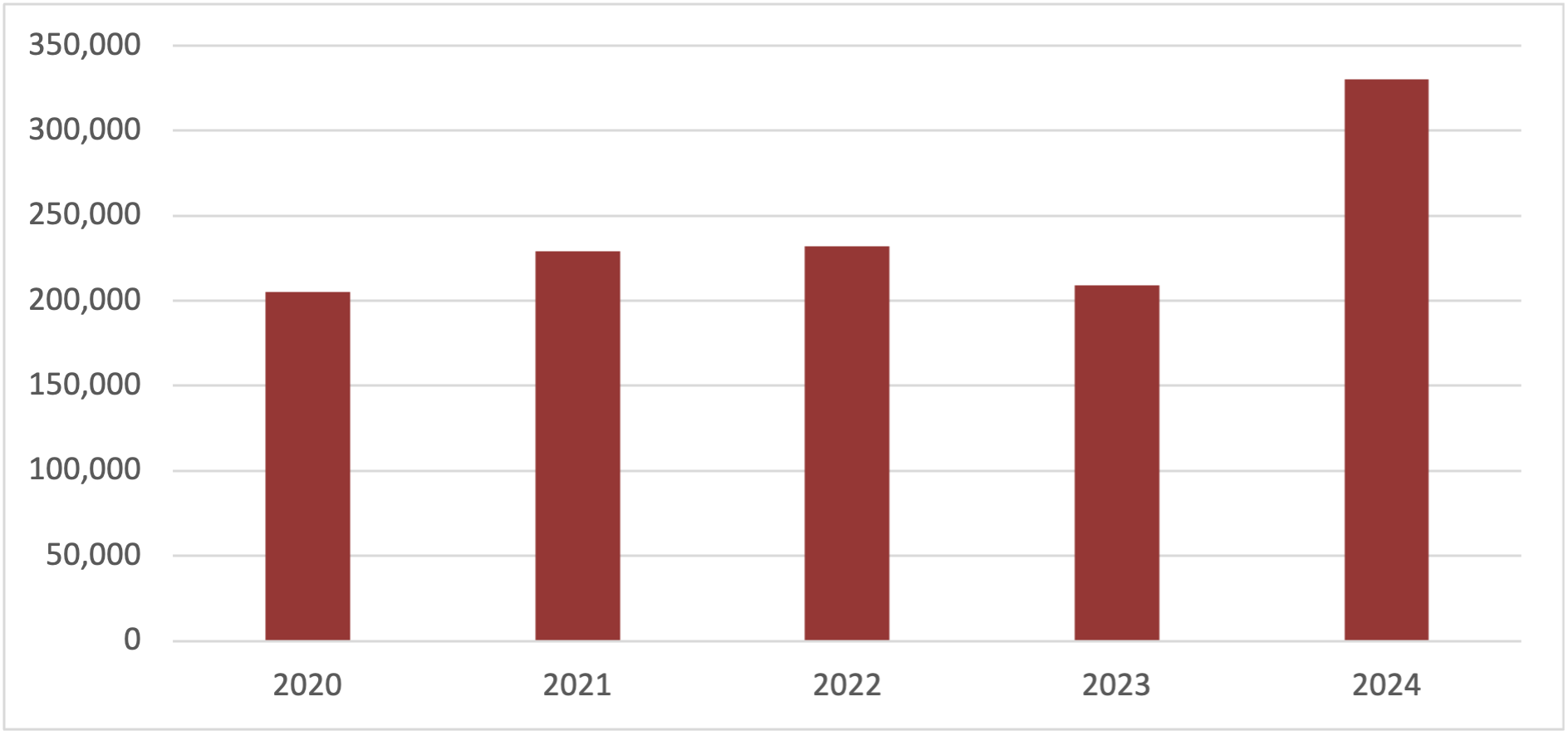
In 2024, visitors accessed our website from 220 countries, underscoring the journal’s global reach. Of the 330,000 total active users, 181,000 were from the United States, meaning approximately 45% of our audience engaged from outside of the United States. The top 10 countries by active users are listed in Table 3 below.
| Country | Active users |
| United States | 185,500 |
| United Kingdom | 18,414 |
| Canada | 16,319 |
| Philippines | 15,615 |
| Australia | 10,375 |
| Germany | 7,522 |
| India | 7,142 |
| Netherlands | 4,381 |
| France | 3,654 |
| Indonesia | 3,214 |
Author and reviewer demographics
Corresponding authors from more than 25 countries submitted to the journal, spanning all inhabited continents. The percentage of submissions from corresponding authors based at U.S. institutions is approximately 34%, while submissions from non-U.S. countries account for about 66% (see Figure 6). These percentages exclude two submissions with unspecified institutional affiliations.

Authors of manuscripts submitted in 2024 that were accepted for publication also represent an international distribution, with contributors based in 10 different countries (see Figure 8). While this is a smaller subset compared to the broader range of countries from corresponding authors, it continues to reflect the journal’s role as a global platform for misinformation research, bringing together voices from multiple regions and perspectives. Note that these numbers represent all authors of articles accepted for publication, not just the corresponding ones.
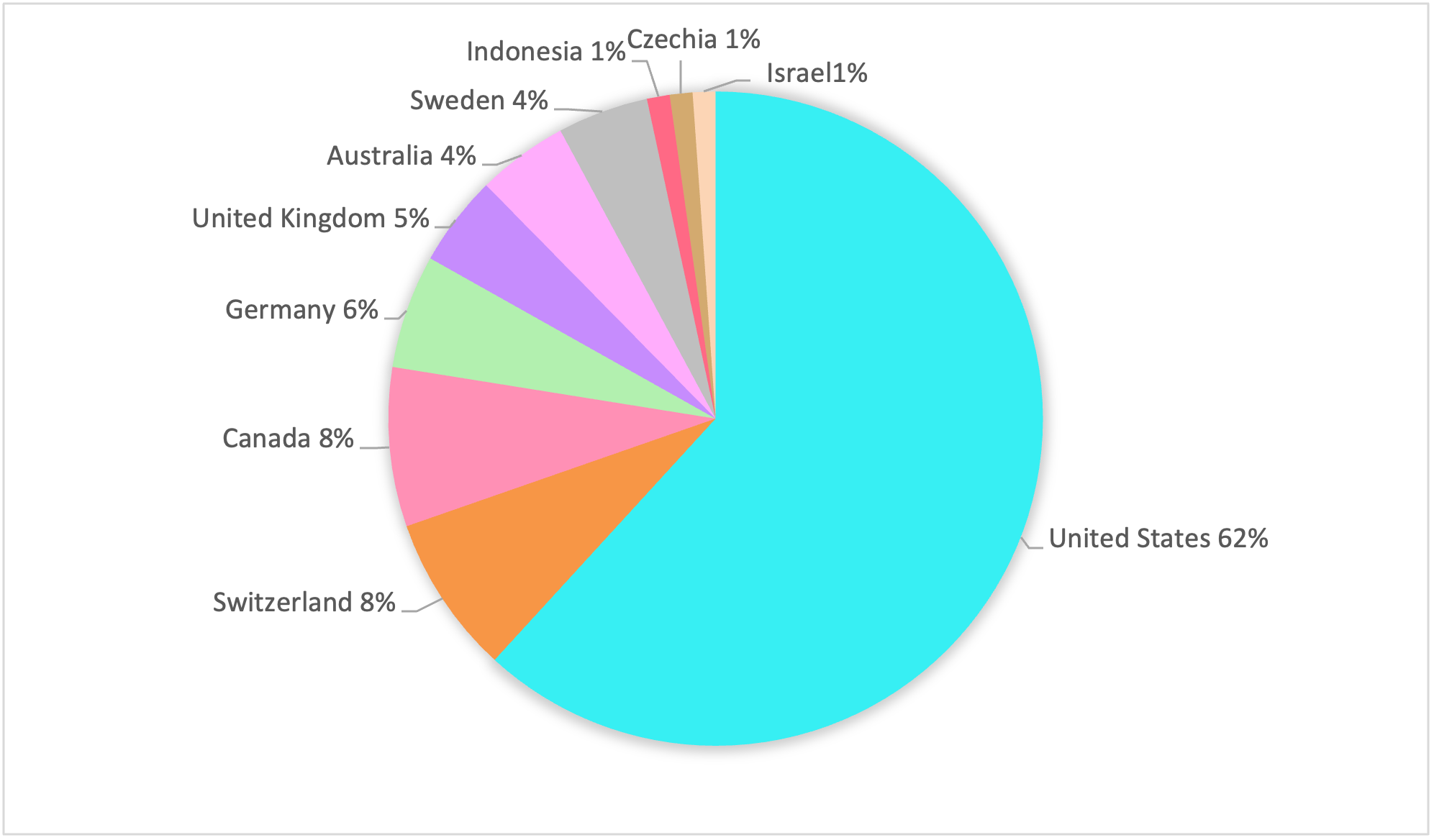
The breadth of perspectives in our journal is also shaped by our dedicated peer reviewers, who provide critical feedback to ensure the rigor and quality of submissions we receive. In 2024, we benefited from the expertise of 94 reviewers from 14 countries (see Figure 9). Just over half of these reviewers (55) were based at U.S. instututions, while the remaining 39 were affiliated with institutions across 13 other countries. We greatly appreciate our reviewers’ dedication and thoughtful evaluations, which play a vital role in shaping the research we publish. For more information about our reviewers, please visit our Reviewer List page.
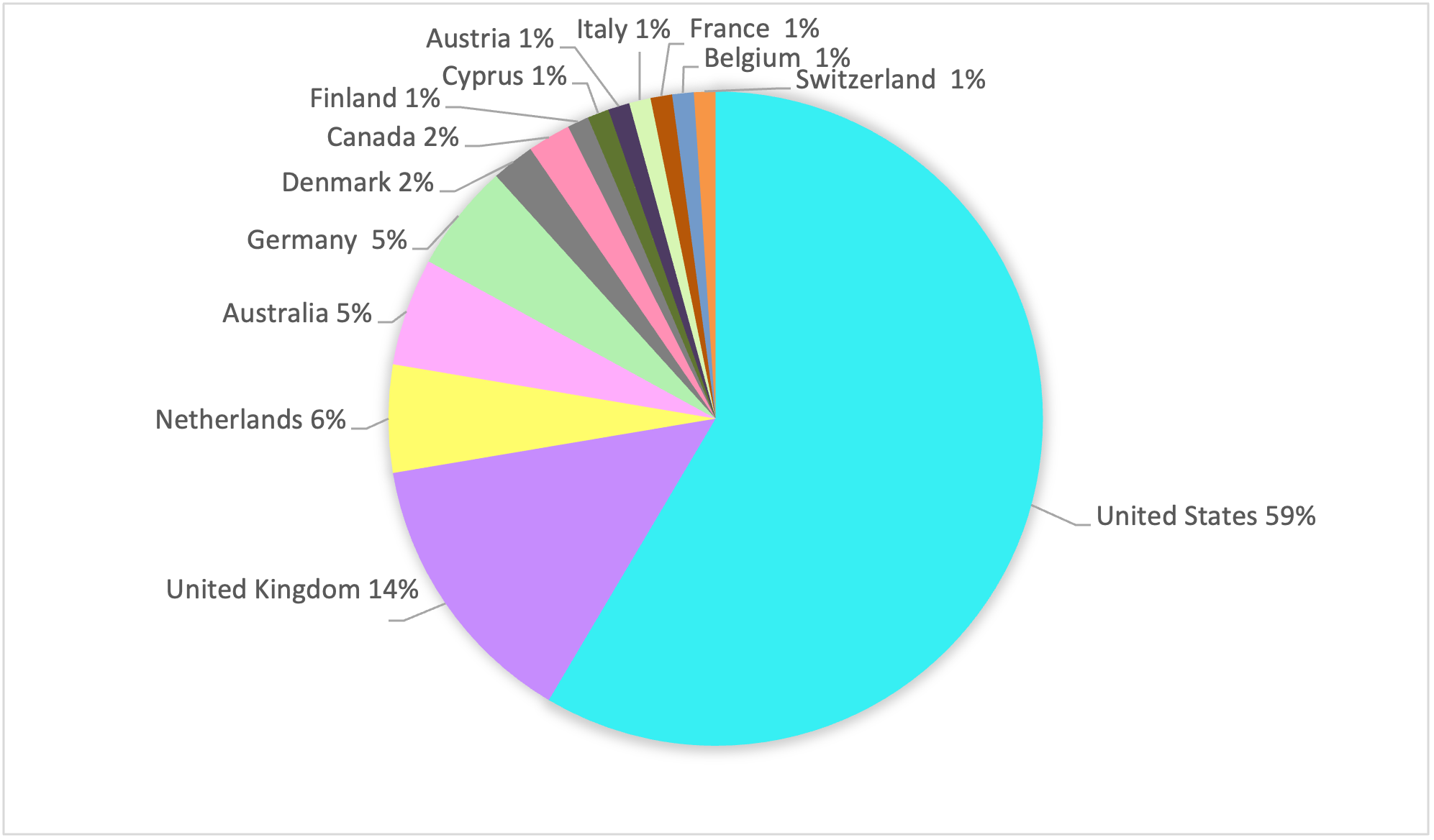
Looking back, moving forward
Our 2024 statistics show the HKS Misinformation Review’s ongoing growth and increasing influence within the field. We look forward to another year of advancing research, fostering global collaboration, and supporting the dissemination of groundbreaking scholarship in the study of misinformation. Once again, we extend our sincere thanks to everyone involved for their continued dedication and support.
Copyright
This is an open access article distributed under the terms of the Creative Commons Attribution License, which permits unrestricted use, distribution, and reproduction in any medium, provided that the original author and source are properly credited.
